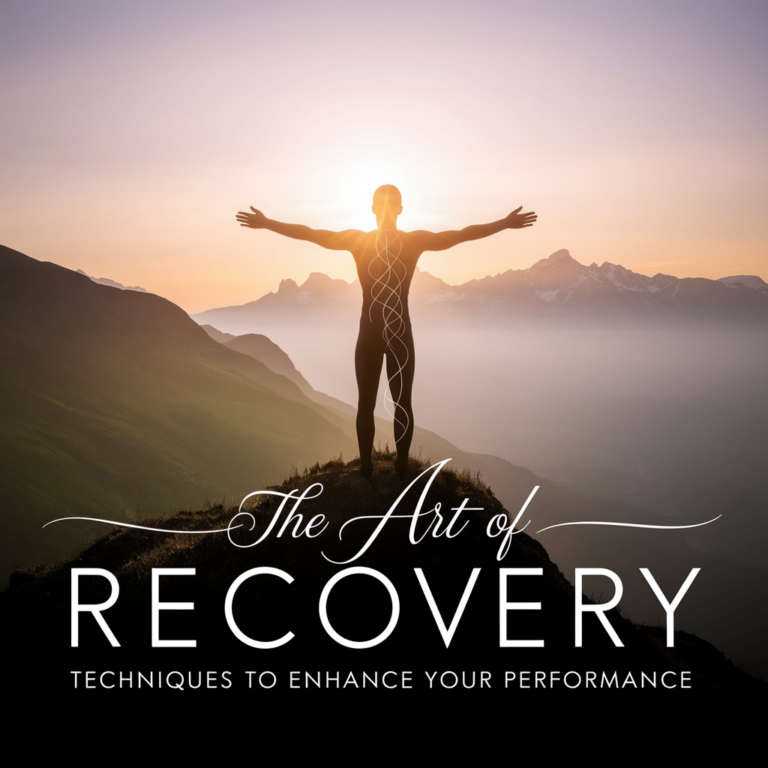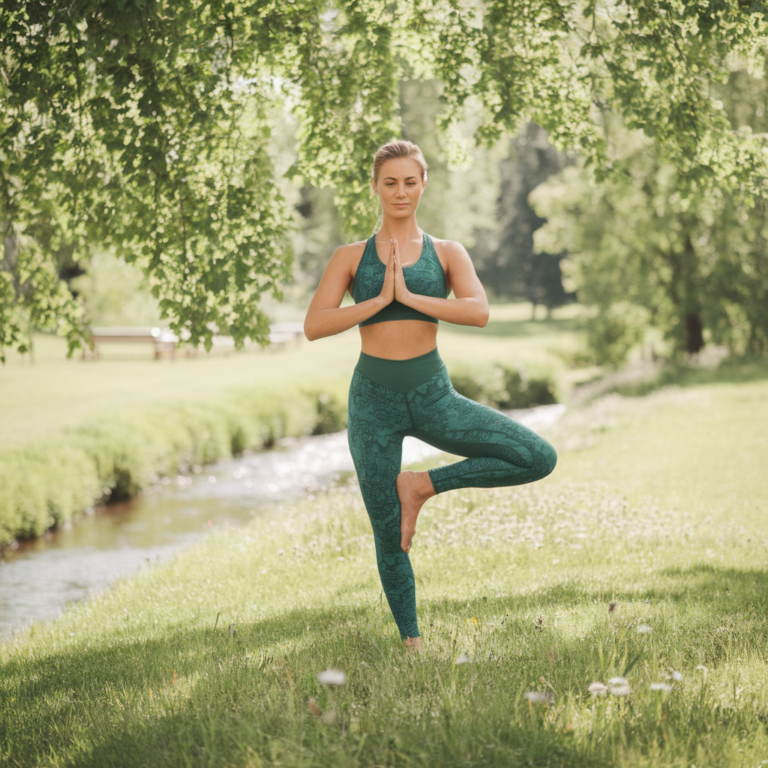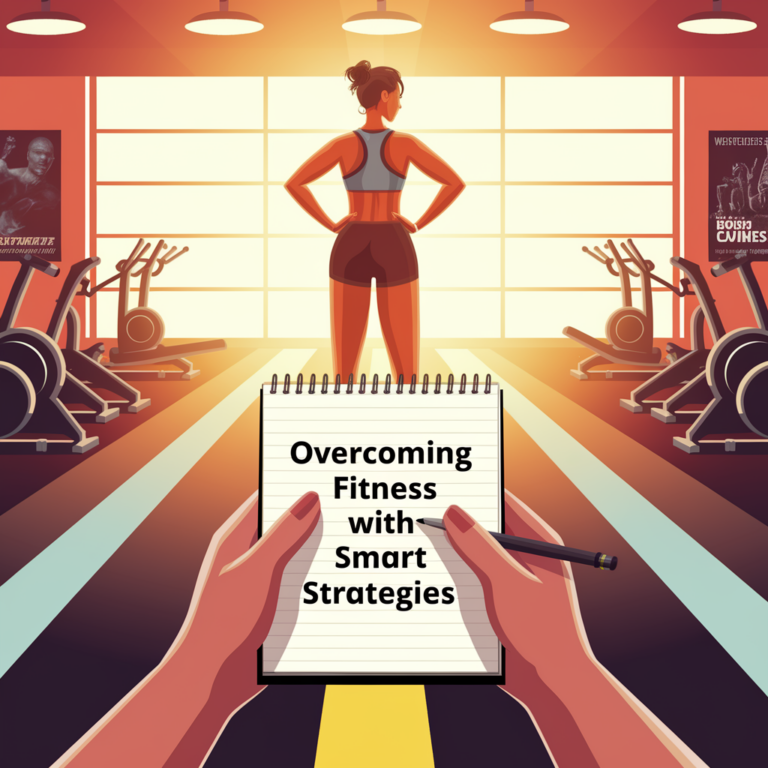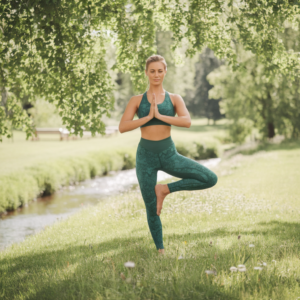Unlocking Your Full Athletic Potential with Mindfulness Techniques
Have you ever found yourself in the heat of competition, your mind racing faster than your feet? That moment when the pressure is palpable, the stakes are high, and your brain is juggling a million thoughts—“Did I prepare enough? What if I fail?” It’s a familiar scene for many athletes. But what if I told you that the key to unlocking your full athletic potential might not lie solely in physical training? Instead, it could be found in the often-overlooked realm of mindfulness techniques. Yes, I know what you’re thinking: “Mindfulness? Isn’t that just a fancy term for sitting cross-legged and humming?” But stick with me here; it’s much more than that.
The Mind-Body Connection
Let’s delve into the fascinating connection between your mind and body. The field of sports psychology has exploded in recent years, revealing just how intertwined our mental state is with athletic performance. Research suggests that a significant number of athletes experience performance anxiety, which can hinder their ability to perform at their best. Mindfulness techniques can help combat this anxiety by bringing your focus back to the present moment, pushing away the distracting thoughts that cloud your performance.
I remember watching a documentary on a professional basketball player who struggled with free throws. He was physically gifted, yet every time he stepped up to the line, his mind would spiral into a vortex of doubt. The solution? A mindfulness coach who taught him breathing techniques and visualization exercises. Fast forward a few months, and he was sinking free throws with the confidence of a seasoned pro. It struck me that the mind can be an athlete’s greatest ally or worst enemy.
What Is Mindfulness?
Before we get too deep into techniques, let’s clarify what mindfulness actually is. At its core, mindfulness is the practice of being fully present in the moment, paying attention to your thoughts, feelings, and bodily sensations without judgment. It sounds simple, but in our fast-paced world—where distractions are just a smartphone swipe away—being present can feel like an Olympic feat in itself.
Mindfulness practices can take various forms, from meditation and deep breathing to yoga and even mindful running. The beauty of it all is you can find a practice that resonates with you. The goal is to cultivate awareness, reduce stress, and enhance overall performance. It sounds straightforward, but the impact can be profound.
The Science Behind Mindfulness in Sports
It’s one thing to talk about mindfulness, but what does the science say? Some studies suggest that mindfulness can enhance focus, increase emotional resilience, and even reduce the risk of injury. A paper published by the Journal of Sports Sciences found that athletes who engaged in mindfulness training exhibited improved concentration and reduced anxiety levels during high-pressure situations. It’s like giving your brain a workout while your body is doing the heavy lifting.
One particularly fascinating study involved a group of competitive swimmers. Those who practiced mindfulness techniques showed significant improvements in their race times compared to those who did not. The swimmers reported feeling more in control and less overwhelmed by the competitive environment. So, if you thought mindfulness was just a trendy buzzword, think again—it’s backed by research.
Practical Mindfulness Techniques for Athletes
Now that we’ve established the importance of mindfulness, let’s explore some practical techniques you can start implementing today. No need to don a robe and meditate on a mountaintop; these methods can easily be integrated into your training regimen.
1. Mindful Breathing
This is one of the simplest yet most effective mindfulness techniques. Start by finding a quiet space—don’t worry, you don’t need a Zen garden, just a corner of your living room will do. Sit or lie down comfortably and close your eyes. Take a deep breath in through your nose, hold it for a moment, and then exhale slowly through your mouth. Repeat this process, focusing solely on your breath.
As thoughts come to mind (and they will—trust me), acknowledge them and gently guide your focus back to your breath. It’s like training a puppy; you’ll have to redirect your attention repeatedly. Over time, this practice can help you develop a greater awareness of your thoughts and emotions, making it easier to stay focused during competition.
2. Visualization
Visualization is a powerful technique used by many elite athletes. It involves creating a mental image of yourself succeeding in your sport. Picture yourself executing a perfect jump, making that game-winning shot, or crossing the finish line first. Make it as vivid as possible—engage all your senses. How does it feel? What do you hear? What emotions arise?
Research suggests that visualization can enhance performance by creating neural patterns in the brain similar to actually performing the activity. It’s like a dress rehearsal for your brain, prepping it for the real deal. It sounds a bit out there, but many athletes swear by it. I recall a conversation with a former Olympic sprinter who claimed that visualizing his races was as crucial as his physical training. He even said, “If I could see it, I could be it.”
3. Body Scan
The body scan technique involves focusing on different parts of your body, noticing sensations, tension, or discomfort. It’s a great way to connect with your physical self and can be particularly beneficial after a tough workout.
To perform a body scan, lie down comfortably and close your eyes. Start at your toes, noticing any sensations there, and gradually work your way up to your head. If you feel tension, try to breathe into that area, visualizing the tension melting away with each exhale. This practice not only promotes relaxation but also helps you tune in to your body’s signals, which is crucial for any athlete.
4. Mindful Movement
This technique can be seamlessly integrated into your training routine. Whether you’re running, lifting weights, or practicing your sport, focus on the sensations in your body during movement. Pay attention to how your feet hit the ground, the rhythm of your breath, and the way your muscles engage.
Mindful movement can transform your workouts from a mindless routine into a meditative practice. It encourages you to be present, enhancing your connection with your body and improving your overall performance. I once tried this during a long run, and instead of zoning out, I found myself enjoying the sounds of nature around me. Who knew the birds could be such great running companions?
Integrating Mindfulness into Your Training
Now that we’ve covered several techniques, the next challenge is integration. How do you weave mindfulness into your already packed training schedule? It’s easier than you might think. Start small. Here are a few suggestions:
- Begin each training session with a few minutes of mindful breathing.
- Incorporate visualization exercises into your pre-competition routine.
- Use a body scan to cool down after workouts.
- Engage in mindful movement during your practice sessions.
By gradually incorporating these practices, you can develop a routine that enhances both your physical and mental game. And let’s be honest—who wouldn’t want to be that athlete who not only trains hard but also trains smart?
Mindfulness in Competition
Competition can be an entirely different beast. The adrenaline, the spectators, the pressure to perform—all of these factors can throw even the most seasoned athlete off their game. This is where mindfulness becomes paramount. Here are a few strategies to employ during competition:
1. Pre-Competition Rituals
Establish a pre-competition routine that includes mindfulness practices. This could be a series of deep breaths, a few minutes of visualization, or even a short body scan. The idea is to create a sense of calm and readiness before you step into the arena.
2. Grounding Techniques
When competition jitters kick in, grounding techniques can help keep you centered. Focus on your immediate surroundings—what do you see, hear, and feel? This can help bring you back to the present moment, reducing anxiety and enhancing focus.
3. Embrace the Process
It’s easy to get caught up in the outcome—winning or losing—but mindfulness encourages you to embrace the process. Focus on the actions you can control, like your technique and effort, rather than the final result. This shift in mindset can alleviate pressure and allow you to perform at your best.
Real-Life Examples
Talking about techniques is one thing, but let’s explore how some well-known athletes have successfully integrated mindfulness into their routines. Take NBA superstar LeBron James, for example. He’s been vocal about his use of mindfulness practices, including meditation and visualization. In interviews, he’s described how these techniques have helped him maintain focus during high-pressure playoff games. It’s no coincidence that he’s often regarded as one of the most mentally tough players in the league.
Then there’s tennis legend Novak Djokovic, who attributes a significant part of his success to mindfulness and meditation. He’s shared that these practices have not only improved his on-court performance but also his overall well-being. It’s inspiring to think about how these athletes have harnessed their mental strength to achieve greatness.
The Road Ahead
As you embark on your mindfulness journey, remember that it’s not a one-size-fits-all approach. What works for one athlete may not resonate with another. It’s important to experiment and find the techniques that work best for you. Be patient with yourself—mindfulness is a skill that takes time to develop. You wouldn’t expect to run a marathon without training, right? The same applies here.
Incorporating mindfulness into your athletic routine can lead to profound changes, not just in your performance but in your overall approach to sport and life. You might find yourself enjoying the process more, feeling less pressure, and ultimately unlocking your full athletic potential.
Final Thoughts
So, as you lace up your sneakers or strap on your gear for your next practice or competition, take a moment to breathe. Embrace the present, visualize your success, and connect with your body. Mindfulness isn’t just a trendy concept; it’s a powerful tool that can elevate your game to new heights. Who knows? You might just discover that your greatest rival isn’t the athlete across the field but the doubts swirling in your own mind. And if you can conquer that, well, the sky’s the limit.
Now, go forth and be mindful—your athletic potential awaits!








